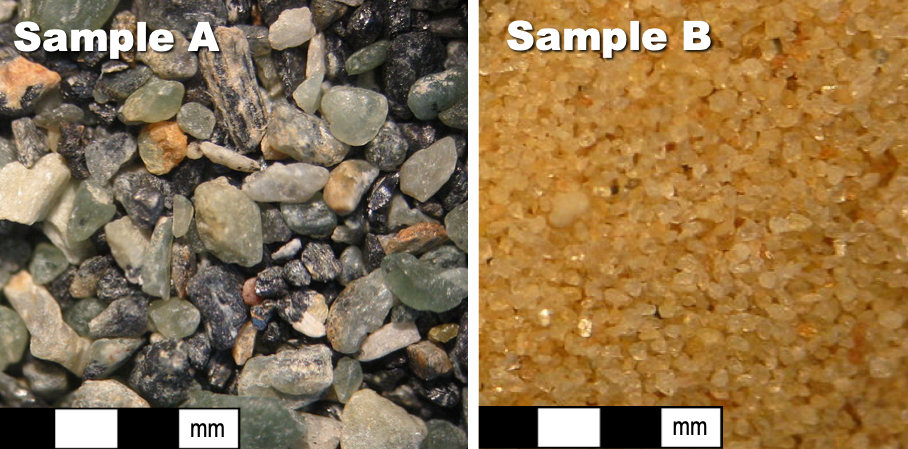Chapter 8 Summary & Key Term Check
Chapter 8 Main Ideas
8.1 Physical Weathering
Rocks weather when they are exposed to surface conditions. In most cases, conditions at Earth’s surface are very different from the conditions under which the rocks formed. Physical weathering processes include exfoliation, freeze-thaw, salt crystallization, and the wedging effects of plant growth.
8.2 Chemical Weathering
Chemical weathering takes place when minerals within rocks are not chemically stable in their existing environment. Chemical weathering processes include hydrolysis of silicate minerals to form clay minerals, oxidation of iron in silicate and other minerals to form iron oxide minerals, and dissolution of calcite.
More Practice with Types of Physical and Chemical Weathering
8.3 Controls on Weathering Processes and Rates
Chemical weathering is faster when temperatures are warmer and moisture is present. Physical weathering is more important in regions with frequent freeze-thaw cycles. Weathering rates can depend on the abundance oxygen and carbon, and will vary with the mineral composition of a rock. Weathering itself accelerates weathering by exposing more surface area to chemical reactions.
8.4 Weathering and Erosion Produce Sediments
Quartz grains are one of main products of weathering and erosion, because quartz is resistant to chemical and physical weathering. Clay minerals, iron oxide and iron hydroxide minerals, aluminum hydroxide minerals, and ions in solution are common products of chemical weathering. Particles produced by weathering can be described in terms of their composition, grain size, sorting, rounding, and sphericity.
More Practice with Grain Characteristics
 Descriptions:
Descriptions:
- Sample A: Sand with olivine grains from Marine d’Albo, Corsica, France. Grains are generally smooth. They come in many shapes (some almost circular and some very elongated) and compositions, and range in size from 0.5 to 2 mm.
- Sample B: Sand from Qafsah, Tunesia. The sand is stained yellow, but is all quartz. Individual grains are all less than 0.5 mm. Grains are all approximately the same shape (generally blocky with sharp edges) and the same size.
Indicate whether the below describes Sample A or :
- The sample that has the best sorting
- The sample that has the lowest sphericity
- The sample that has the best rounding (Remember: rounding is related to smoothness, not the overall shape of the grain)
- The sample that is the most mature
To check your answers, navigate to the below link to view the interactive version of this activity.
8.5 Weathering and Soil Formation
Soil is a mixture of fine mineral fragments (including quartz and clay minerals), organic matter, and empty spaces that may be partially filled with water. Soil formation is controlled by climate (especially temperature and humidity), the nature of the parent material, the slope (because soil can’t accumulate on steep slopes), and the amount of time available. Typical soils have layers called horizons, which form because of differences in the conditions with depth.
8.6 Soils of Canada
Canada has a range of soil types related to our unique conditions. The main types of soil form in forested and grassland regions, but there are extensive wetlands in Canada that produce organic soils, and large areas where soil development is poor because of cold conditions.
More Practice with Canadian Soil Types
8.7 Weathering and Climate Change
Weathering is an important part of how imbalances in the carbon cycle are adjusted, but it’s part of the geological component of the carbon cycle which acts over the long term. The carbon cycle includes the addition of carbon to the atmosphere by volcanic eruptions. Carbon is extracted from the atmosphere when silicate minerals are weathered, but also when carbon when it is transformed into organic matter by plants. Organic matter can be stored in soil, permafrost, and rocks. Burning of fossil fuels involves moving carbon from geological reservoirs to the atmosphere on timescales much faster than the geological carbon cycle operates.
Key Term Check
What key term from Chapter 8 is each card describing? Turn the card to check your answer.

